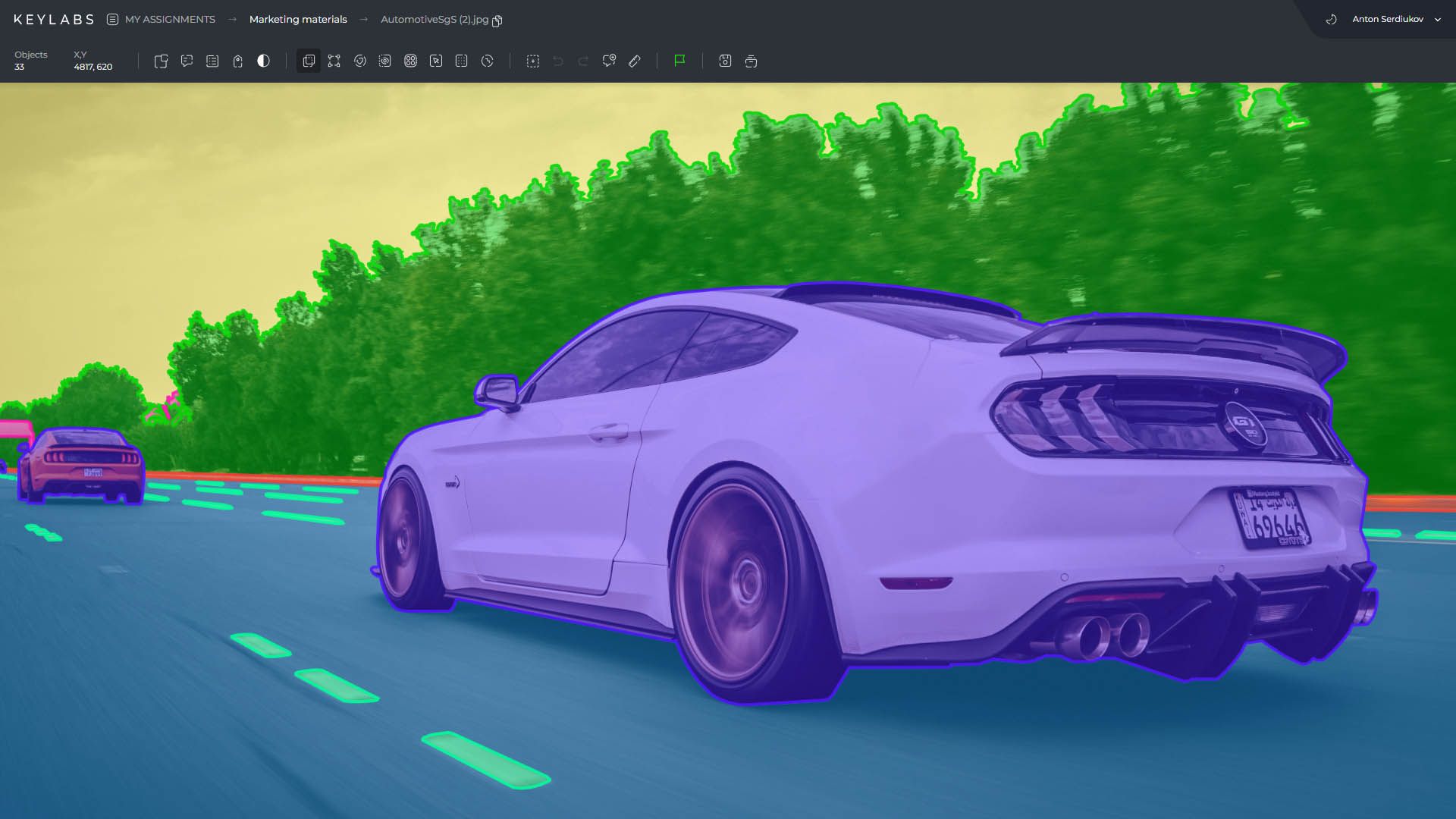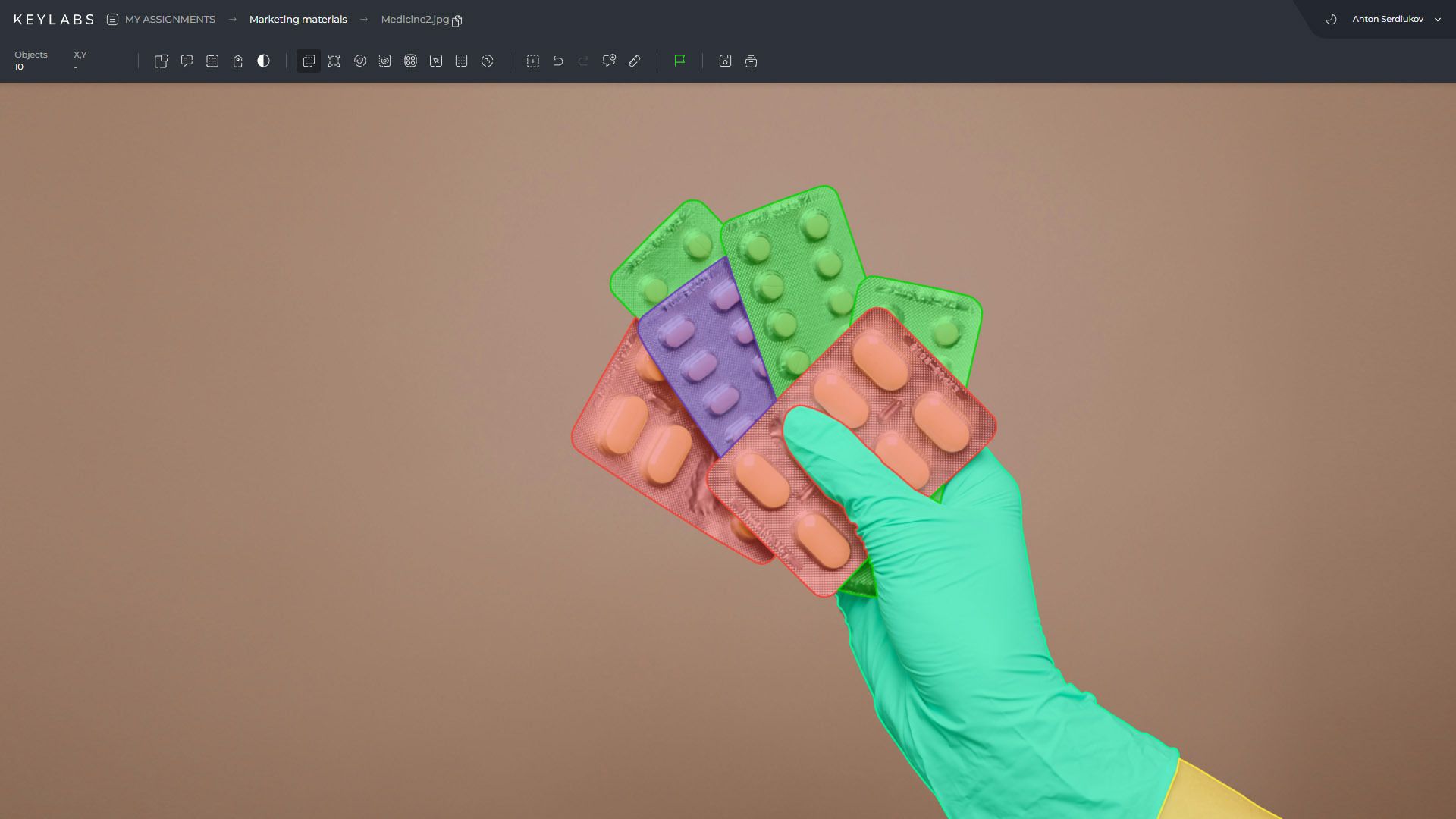Deep Dive into Instance Segmentation with Deep Learning
Instance segmentation is a crucial task in computer vision, as it enables the accurate identification and delineation of individual objects within an image. Traditional image processing methods often struggle with distinguishing between multiple objects of the same class, which can lead to inadequate interpretations of visual data. Instance segmentation goes beyond mere object detection by providing pixel-level precision in outlining each object, allowing for a deeper understanding of complex visual scenes.

This article will explore various instance segmentation techniques, such as single-shot instance segmentation and transformer- and detection-based methods. We will also discuss the practical applications of instance segmentation in fields like medical imaging and autonomous vehicles, as well as the challenges involved in implementing this technique.
Key Takeaways:
- Instance segmentation is a crucial task in computer vision.
- It enables precise identification and delineation of individual objects within an image.
- Traditional image processing methods often struggle with distinguishing between multiple objects of the same class.
- Instance segmentation provides pixel-level precision in outlining each object.
- It is widely used in various industries, including medical imaging and autonomous vehicles.
Types of Image Segmentation
Image segmentation is a fundamental task in computer vision that aims to partition an image into meaningful regions. It plays a crucial role in various applications, including object recognition, scene understanding, and image editing. In this section, we will explore three types of image segmentation: semantic segmentation, instance segmentation, and panoptic segmentation.
Semantic Segmentation
In semantic segmentation, the goal is to classify each pixel in an image into predefined categories, such as "sky," "road," "tree," or "person." This technique provides a general understanding of the scene's context by assigning a unique label to each pixel. By segmenting the image based on semantics, we can extract valuable information about the objects and their locations.
Instance Segmentation
Instance segmentation goes a step further by precisely identifying and delineating individual objects within an image. Unlike semantic segmentation, which groups pixels into broad categories, instance segmentation assigns a unique label to each pixel to differentiate between different instances of the same class. This fine-grained segmentation enables more accurate object localization and boundary delineation.
Panoptic Segmentation
Panoptic segmentation aims to provide a comprehensive understanding of both individual objects in the scene (instance segmentation) and the scene's overall semantic composition (semantic segmentation). It combines the strengths of instance and semantic segmentation to create a unified representation of the visual scene. This holistic perspective allows for a deeper understanding of the relationships between objects and their surrounding context.
Understanding the different types of image segmentation techniques is vital for developing effective computer vision algorithms and applications. Each type has its own unique characteristics and applications, and choosing the appropriate segmentation method depends on the specific requirements of the task at hand.
Instance Segmentation Techniques
Instance segmentation, a fundamental task in computer vision, employs various techniques to accurately detect and delineate individual objects within an image. In this section, we will explore three popular methods: single-shot instance segmentation, transformer-based methods, and detection-based instance segmentation.
Single-Shot Instance Segmentation
Single-shot instance segmentation methods offer real-time object detection and segmentation capabilities by performing both tasks in a single pass through the neural network. These methods eliminate the need for time-consuming region proposal stages, enabling efficient and fast processing of images. By efficiently detecting and segmenting objects, single-shot instances segmentation methods are well-suited for applications requiring real-time performance, such as video analysis, robotics, and autonomous driving.

Transformer-based Methods
Transformer-based methods have emerged as powerful techniques in various computer vision tasks, including instance segmentation. These methods leverage the self-attention mechanism to capture intricate relationships between pixels, enabling precise object segmentation. By attending to relevant spatial and contextual information, transformer-based methods enhance the accuracy of instance segmentation results. With their ability to capture long-range dependencies and semantic relationships, transformer-based methods have demonstrated impressive performance on challenging datasets.
Detection-based Instance Segmentation
Detection-based instance segmentation methods combine the benefits of object detection and segmentation into a unified framework. By first detecting objects using object detection algorithms and then refining the segmentation using pixel-level classification, these methods achieve accurate and detailed object segmentation. Detection-based instance segmentation methods leverage the strengths of both tasks, enhancing the overall performance and generating high-quality object masks. These methods find wide applications in fields such as image editing, virtual reality, and augmented reality.
To better understand the differences and characteristics of the aforementioned instance segmentation techniques, take a look at the table below:
| Instance Segmentation Technique | Advantages | Applications |
|---|---|---|
| Single-shot instance segmentation | - Real-time performance - Efficient object detection and segmentation | - Video analysis - Robotics - Autonomous driving |
| Transformer-based methods | - Captures intricate pixel relationships - Enhanced segmentation accuracy | - Object recognition - Scene understanding |
| Detection-based instance segmentation | - Accurate object detection and segmentation - Detailed object masks | - Image editing - Virtual reality - Augmented reality |
By exploring these different techniques, researchers and practitioners can select the most appropriate approach based on their specific requirements and constraints. The choice of instance segmentation technique depends on factors such as the application context, real-time requirements, and dataset characteristics.
Now that we have discussed the various techniques used in instance segmentation, the next section will delve into two popular models in image segmentation: U-Net and Mask R-CNN.
Understanding Segmentation Models: U-Net and Mask R-CNN
When it comes to image segmentation, two prominent models that have made significant contributions are U-Net and Mask R-CNN. These models have revolutionized the field and are widely used for different purposes, each excelling in its own unique way.
U-Net: Powering Medical Image Segmentation
U-Net has emerged as one of the most popular models for medical image segmentation. Its architecture, which combines contracting and expanding paths, allows for accurate localization and context information. This makes U-Net particularly suitable for tasks like segmenting tumors, organs, and abnormalities in medical images.
"The architecture of U-Net is designed to capture fine details and provide precise segmentation masks, which are crucial for medical professionals."
U-Net's contracting path consists of convolutional layers, which capture and encode contextual information while reducing spatial dimensions. The expanding path then uses transposed convolutions to decode the information and generate segmentation masks. The integration of skip connections between the contracting and expanding paths helps retain important details.

Mask R-CNN: Excelling in Instance Segmentation
Mask R-CNN is an extension of the Faster R-CNN model and has gained significant popularity for its exceptional performance in instance segmentation tasks. Unlike U-Net, which focuses on pixel-level segmentation, Mask R-CNN goes a step further, enabling precise object segregation within an image.
"The addition of a segmentation mask branch in Mask R-CNN allows for accurate delineation of individual objects, making it a top choice for instance segmentation."
The architecture of Mask R-CNN is built upon a backbone network, such as ResNet or VGG, that extracts features from the input image. The region proposal network (RPN) generates potential object proposals, which are then refined and classified by the network. The segmentation mask branch predicts the pixel-wise segmentation masks for each detected object, resulting in detailed instance segmentation.
| Model | Key Features | Applications |
|---|---|---|
| U-Net | - Unique architecture combining contracting and expanding paths for accurate localization and context - Effective in medical image segmentation | - Tumor detection and segmentation - Organ segmentation in medical imaging - Abnormality detection in medical images |
| Mask R-CNN | - Extension of Faster R-CNN model - Adds a branch for predicting segmentation masks - Precise instance segmentation | - Object detection and instance segmentation - Autonomous vehicles - Robotics and industrial automation |
Both U-Net and Mask R-CNN have contributed significantly to the field of image segmentation and have found widespread adoption in various domains. The choice between these models depends on the specific segmentation task and the desired level of detail and accuracy.
Application and Importance of Image Segmentation
Image segmentation, particularly instance segmentation, serves a critical role in various industries. In the field of medical imaging, accurate segmentation is of utmost importance for image-guided interventions, radiotherapy, and diagnostics. Through precise delineation of diseased tissues and organs, medical professionals can make more accurate diagnoses and develop effective treatment plans.
In the context of autonomous vehicles, instance segmentation plays a pivotal role in the recognition and tracking of objects such as roads, pedestrians, and other vehicles. This information is vital for ensuring the safe operation of autonomous vehicles and preventing accidents.
Challenges and Solutions in Instance Segmentation
While instance segmentation is a powerful technique in computer vision, it presents its own unique set of challenges that researchers and practitioners strive to address. These challenges often arise due to the complexity of visual scenes and the need for accurate object delineation. Let's explore some of the key challenges in instance segmentation and the solutions proposed to overcome them.
Accurate Delineation of Object Boundaries
One major challenge in instance segmentation is the accurate delineation of object boundaries, particularly in complex visual scenes. It requires distinguishing between objects of the same class and separating overlapping instances. This challenge becomes more pronounced when objects have irregular shapes or are closely packed together. Improving the precision of boundary delineation is crucial to ensure accurate instance segmentation.
Occlusions and Variations in Object Scales
Another challenge in instance segmentation is handling occlusions and variations in object scales. Occlusions occur when objects partially or completely hide other objects in images, making it difficult to accurately segment individual instances. Additionally, variations in object scales pose a challenge as objects may appear at different sizes, requiring robust scaling mechanisms to ensure accurate segmentation across varying scales.
Computational Efficiency
Instance segmentation algorithms often need to process large datasets or operate in real-time environments, necessitating efficient computational approaches. High computational requirements can limit real-time applications and hinder the scalability of instance segmentation algorithms. Addressing this challenge involves developing more efficient algorithms and optimizing network architectures to improve processing speed without compromising accuracy.
Researchers have proposed several solutions to address these challenges and improve the effectiveness of instance segmentation:
- Improving the network architecture: Researchers continuously explore new network architectures to improve precision in object boundary delineation and enhance overall performance in instance segmentation tasks.
- Incorporating attention mechanisms: Attention mechanisms allow the network to focus on relevant features and regions of interest within an image, aiding in accurate instance segmentation, particularly when handling occlusions and complex scenes.
- Developing efficient algorithms for real-time applications: Algorithms that balance accuracy and computational efficiency are crucial for real-time instance segmentation in applications like autonomous vehicles, where timely processing is essential.
By addressing these challenges and implementing the proposed solutions, researchers and practitioners can push the boundaries of instance segmentation, making it more effective and applicable in various domains.
| Challenge | Solution |
|---|---|
| Accurate Delineation of Object Boundaries | Improving precision in boundary delineation, leveraging advanced network architectures. |
| Occlusions and Variations in Object Scales | Incorporating attention mechanisms to handle occlusions and scaling mechanisms to handle variations in object scales. |
| Computational Efficiency | Developing efficient algorithms and optimizing network architectures for real-time applications. |
Conclusion
Instance segmentation is a critical task in computer vision that allows for precise object identification and delineation. With the advancements in deep learning techniques, such as U-Net and Mask R-CNN, the field of image segmentation has undergone a revolution, leading to new possibilities for applications in various industries.
Accurately segmenting and analyzing images provides us with deeper insights into complex visual scenes and enables advanced AI-driven image analysis. This has significant implications in fields like medical imaging, where the precise delineation of diseased tissues and organs can lead to more accurate diagnoses and treatment plans. Additionally, instance segmentation plays a crucial role in autonomous vehicles by allowing for the recognition and tracking of objects, ensuring safe operations and accident avoidance.
As technology continues to advance, we can expect instance segmentation to continue playing a significant role in computer vision and artificial intelligence. With ongoing research and development efforts to address challenges like object boundary delineation and computational efficiency, instance segmentation will further enhance its capabilities and contribute to a wide range of applications in the future.
FAQ
What is instance segmentation?
Instance segmentation is a computer vision task that involves accurately identifying and delineating individual objects within an image at pixel level precision.
How is instance segmentation different from other types of image segmentation?
Instance segmentation goes beyond semantic segmentation, which classifies pixels into predefined categories, by precisely identifying and outlining individual objects within an image.
What are the different techniques used in instance segmentation?
There are various techniques employed in instance segmentation, including single-shot instance segmentation, transformer-based methods, and detection-based instance segmentation.
What are some popular instance segmentation models?
Two prominent models in image segmentation are U-Net and Mask R-CNN. U-Net is commonly used in medical image segmentation, while Mask R-CNN excels in instance segmentation.
What are the practical applications of instance segmentation?
Instance segmentation is crucial in fields like medical imaging, where it enables accurate diagnoses and treatment plans, and in autonomous vehicles, where it allows for the recognition and tracking of objects for safe operation.
What challenges are associated with instance segmentation?
Some challenges in instance segmentation include accurately delineating object boundaries, handling occlusions, variations in object scales, and ensuring computational efficiency.
Are there any solutions to overcome the challenges in instance segmentation?
Researchers have proposed solutions such as improving network architectures, incorporating attention mechanisms, and developing more efficient algorithms for real-time applications.
